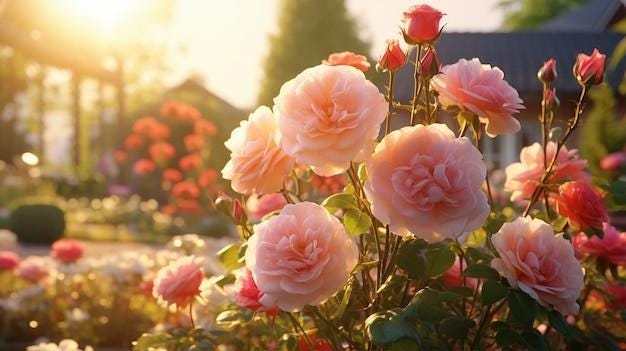Written by Ruby Ho
Edited by CHIQIO
Keywords: olfactory imagery, scent and memory, emotional expression, sensory experience, creative writing
Meta description: Discover the art of olfactory imagery and learn how to evoke powerful memories and emotions through the imaginative creation of scents in your mind.
In the realm of human perception, among the five fundamental senses, the sense of smell is often regarded as the most emotionally resonant and capable of triggering memories. Fragrances not only have the power to instantly transport us to specific moments and places but also evoke deeply buried emotional experiences. This unique capability of the olfactory sense makes it an essential element in the tapestry of human emotions and memories. However, beyond the physical experience of smelling, there exists the fascinating concept of olfactory imagination: the ability to construct olfactory experiences through language and thought. This art of olfactory imagery becomes a crucial element in literature, art, and emotional expression.
Understanding Olfactory Imagery
Olfactory imagery is the mental recreation of smells without the physical presence of the actual odor. It is the mind’s ability to recall and imagine scents, much like visualizing a scene or hearing a melody in one’s head. This imaginative faculty is not only intriguing but also deeply influential in various forms of artistic expression. Writers, poets, and artists often rely on olfactory imagery to create vivid and immersive experiences for their audience.
The Connection Between Smell and Memory
The intimate connection between smell and memory is rooted in the brain’s anatomy. The olfactory bulb, which processes smell, is directly linked to the limbic system, a region involved in emotion and memory. This close relationship explains why a whiff of a particular scent can instantly bring back a flood of memories and emotions. For instance, the smell of freshly baked bread might transport someone back to their grandmother’s kitchen, evoking a sense of warmth and nostalgia.
Crafting Olfactory Imagery in Literature
In literature, olfactory imagery is a powerful tool for creating atmosphere and evoking emotional responses. Writers often use descriptive language to paint a sensory picture that includes smells, enriching the reader’s experience. For example, in Patrick Süskind’s novel Perfume: The Story of a Murderer, the protagonist’s extraordinary sense of smell is vividly described, making the reader almost able to smell the world through his nose.
To effectively create olfactory imagery in writing, consider the following techniques:
Specificity: Use specific and familiar smells to ground the reader in a particular setting or moment. Instead of saying “it smelled good,” describe the scent as “the sweet, tangy aroma of ripe oranges.”
Associations: Link smells to emotions or memories. For instance, “the scent of lavender brought a wave of calm, reminiscent of summer evenings in the countryside.”
Multi-sensory Integration: Combine olfactory descriptions with other sensory details to create a fuller experience. For example, “the air was thick with the heady scent of jasmine, mingling with the cool touch of the evening breeze.”
Olfactory Imagery in Art
Visual artists also explore olfactory imagery, often through suggestive visuals and themes. For instance, a painting depicting a lush garden might evoke the smell of blooming flowers, even though the scent is not physically present. This type of imagery relies on the viewer’s personal experiences and associations with certain visuals and their corresponding smells.
The Role of Olfactory Imagery in Emotional Expression
Olfactory imagery can also be a powerful medium for expressing complex emotions. The smell of rain on dry earth, known as petrichor, might evoke a sense of renewal and nostalgia, while the scent of smoke could conjure feelings of warmth and comfort or danger and destruction, depending on the context. By tapping into these associations, artists and writers can evoke deep emotional responses from their audience.
Developing Your Olfactory Imagination
To enhance your ability to create and appreciate olfactory imagery, consider the following practices:
- Mindful Smelling: Pay close attention to the smells around you in everyday life. Try to identify and describe them in detail.
- Memory Association: Reflect on the scents that are significant in your personal history and note the emotions and memories they trigger.
- Creative Practice: Regularly practice writing or creating art that includes olfactory details. Experiment with different ways to describe and evoke smells.
Conclusion
The art of olfactory imagery is a testament to the profound connection between our senses and our emotions. By harnessing the power of olfactory imagination, we can create rich, immersive experiences in literature, art, and beyond. Whether through the written word or visual art, the evocative power of scent adds a unique and deeply personal dimension to human expression. So next time you find yourself reminiscing about a smell, remember that you are engaging in an ancient and powerful art form: the art of olfactory imagery.


 No products in the cart.
No products in the cart.